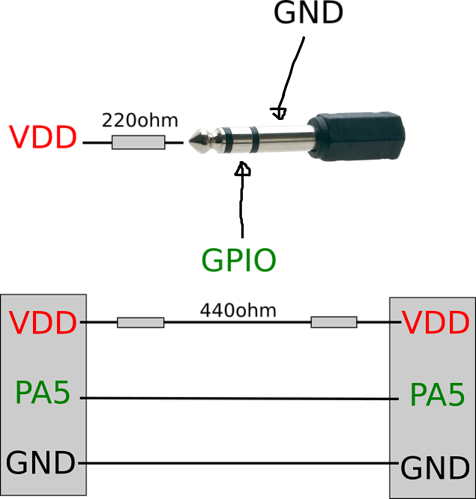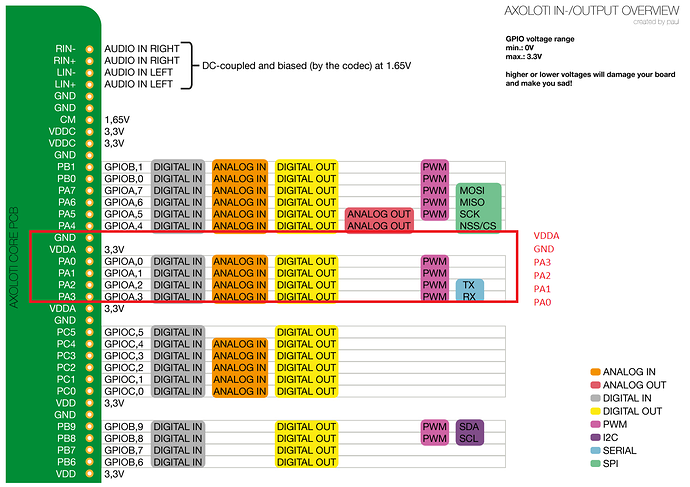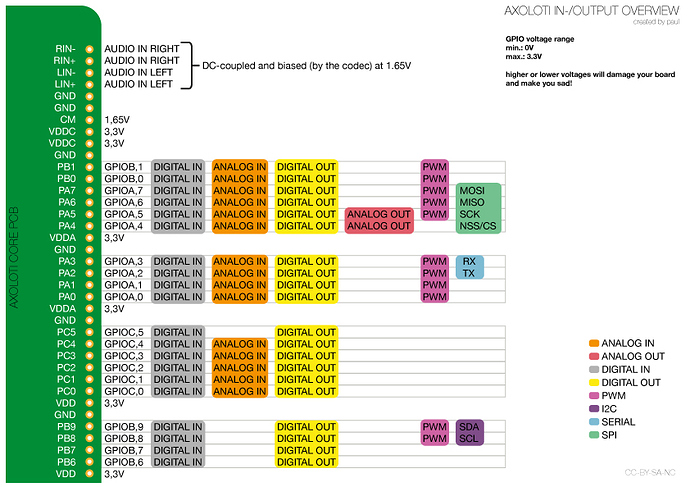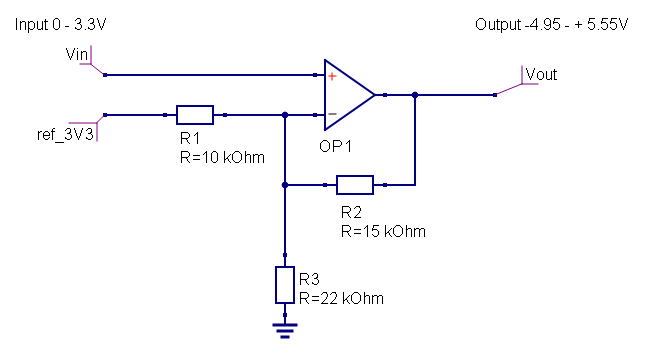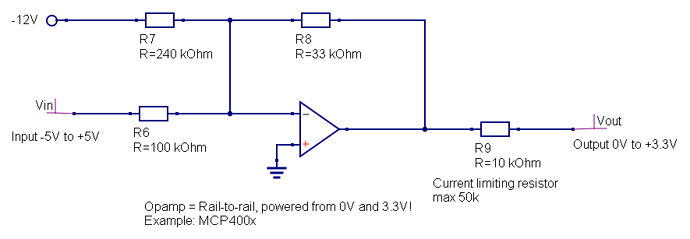Connecting multiple Axoloti's together
I was wondering if there are any problems connecting 2 or more different axoloti boards together ?
For example I have a mono jack socket plugged into PC5 that I use with a switch pedal. I have the same thing on an other board. Can I use one as a trigger out (digital out) and the other as a trigger in, and just plug in a jack between the two, to send clock or trigger information from one to the other.
And on the same note, if I have a stereo jack socket on PA5 or PA4, (that I use with an expression pedal) can I use it to send analog out strait into an analog in of the same kind (with a stereo jack) ?
That way we could have a load of axoloti's communicating together without using midi


